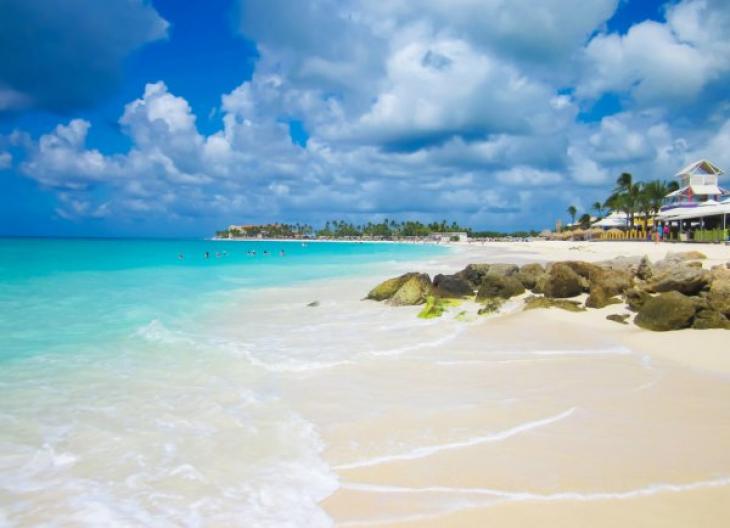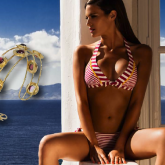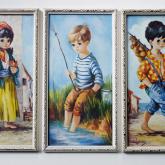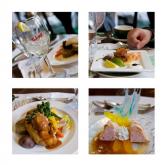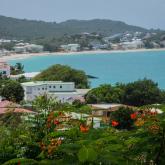
The Dutch Caribbean islands of Aruba, Bonaire, Curaçao – the ABC isles - have no rainy season, no hurricanes but are rich in storied history, beautiful beaches and unique culture.
Visitors to the Dutch Caribbean will discovered a palm-trimmed paradise of six resplendent island set around 550 miles apart. Each naturally and geologically distinct, the islands offer a region rich in a seductive cultural mix with Aruba, Curacao and Bonaire in the far eastern Caribbean, boasting some influences from neighbouring Venezuela while Saba, Sint Maarten and Sint Eustatius clustered east of Puerto Rico have retained more old-world Dutch-Caribbean traits.
Fought over and occupied by the great European maritime powers of the colonial era, the islands of the Netherlands Antilles boast a chequered past. Today a legacy of the region’s fascinating history is the rhythmic tonal beat of the Dutch-Caribbean’s staccato patois, a unique dialect peppered with syncopated pulses that lends the language a lilting musical beat. Born out of Colonial occupation and the spoken word of the indigenous Arawak tribes-folk, the Iberian-Dutch infused Papiamentu tongue is one of the few surviving ancient Caribbean Creole languages. Spoken widely throughout Aruba and the two Leeward Islands of Curacao and Bonaire, the Papiamentu vernacular has many colloquial quirks. Spelling and pronunciation vary from village-to-village and island-to-island, yet Papiamentu remains a proud, shared common bond that glues the scattered cultures of the Netherland Antilles together, and sets it apart as unique in folkloric and ethic terms.
In the early 16th century, the native population of Arawak was depleted once the conquistadors from Spain stepped foot ashore. Then the Dutch seized control to exploit the vast salt deposits for shipment to the mother country in the 17th century. By the 18th century, a booming slave trade had flourished on the islands, bringing untold prosperity to the imperialists until emancipation was won. The abolition of slavery brought economic woes until the 20th century when the discovery of oil off the shores of Venezuela spawned refineries and a booming financial sector. Today, the Dutch influence remains omnipresent across the region, thanks to a lengthy rule only briefly interrupted by ill-fated British occupation 1807-1816.
Although opinion is divided as to the precise make-up of the Netherlands Antilles, the term generally applies the Leeward Islands (Aruba, Bonaire and Curacao, often referred to as the “ABC Isles”) and the Windward Islands of Saba, Sint Eustatius and Sint Maarten. Discovered by Spanish explorer Also de Ojeda in 1499, the ABC islands were originally colonised with a handful of Spanish settlers. The Windward Islands had already been charted by Christopher Columbus a few years earlier. As the discovery was made whilst in the service of Spain, the isles of Saba, Sint Eustatius and Sint Maarten were added to the Spanish colonial empire. Spain’s grip on the region ended when the Dutch West India Company conquered the islands. Today, the Netherlands Antilles islands enjoy different relationships with the Dutch motherland. Saba, Bonaire and Sint Eustatius have been designated as special municipalities of the Kingdom of the Netherlands, while Sint Maarten has been granted autonomy. Both Aruba and Curacao have been awarded “status aparte” as a separate part of the Kingdom.
Aruba

Sitting just 30km off the Venezuelan Paraguaná Peninsula, Aruba boasts a much-deserved reputation as the Netherland Antilles’ glitziest isle. Popular with vacationing Americans, the island has morphed into a complex fusion cultures with US influences that have permeated Dutch-Iberian traditions to offer a hybrid of food, leisure and pleasure. Umpteen restaurants, bars and diners offer international menus with local fare outweighed by Tex-Mex and Italian options and non-native global produce imported daily – at a price.
Synonymous with world-class water-sports, Bonaire is widely recognized as the best of the best with several highly-acclaimed centres offering diving, scuba, snorkelling, deep sea fishing and windsurfing – and much, much more. Most visitors head to Aruba to enjoy its stunning white sand beaches, family-oriented attractions, water-parks, fun-pubs and beach volleyball tournaments. Over 1.5-million cruise ship passengers visit Aruba each year together with some 700,000 holidaymakers. Few feel energetic enough to climb the 165m peaks of the Hooiberg (meaning “haystack”) - but the exertion reaps untold rewards with views from this soaring volcanic formation boasting mesmerising views of the entire island – with Venezuela visible on a clear day.
Bonaire

Spanning over 280 sq km, Bonaire is roughly the size of Antigua but has barely a quarter of the population at just 20,000 inhabitants who enjoy a laid-back pace of life. Although every island of the Netherlands Antilles is synonymous with world-class water-sports, Bonaire is widely recognized as the best of the best. A flat and rocky island 50km east of neighbouring Curacao, Bonaire is an acclaimed centre for diving, scuba, snorkelling, deep sea fishing and windsurfing – and much, much more. Capital city Kralendijk boasts some handsome colonial buildings while rural Bonaire enjoys a peaceful quietude a world away from Aruba’s past-paced hedonistic thrills. Explore magnificent Washington Slagbaii National Park to marvel at the Old Malmok lighthouse before discovering the island’s underwater sights where brilliant corals benefit from excellent visibility up to 100 ft. Swim in crystal-clear warm waters in Bonaire’s Marine Park and watch feeding pink flamingos at the Salt Flats on the island’s southern tip, before a rustic meal of traditional iguana soup washed down with potent local rum.
Curacao

As the hub of the Caribbean slave trade in the 18th century, the island of Curacao also provided a strategically important point for military advances against the Spanish. Situated between Aruba and Bonaire, Curacao (pronounced cure-a-sow) lies 55km north of Venezuela, and is the largest of the Dutch-Caribbean islands at 443 sq km - roughly the size as Barbados. Like Aruba and Bonaire, Curacao is dry and dusty, experiencing just 500mm of rainfall each year. However, the island’s surrounding waters enjoy rich fertility with 38 beaches and 68 dive sites popular with visiting water-sport lovers from all corners of the globe. A cosmopolitan population of around 130,000 mixes Indian, European, African, Asian and Arabic cultures, with capital Willemstad boasting numerous cosy restaurants of varied ethnicity. This strangely vibrant yet elegant settlement on the south-east coast is divided into two by a deep-sea channel where a bustling floating market offers a chance to haggle with Venezuelan traders aboard colourful barges piled high with tropical fruits and wares. Explore the brightly-coloured colonial era narrow streets of the old city Punda, a UNESCO World Heritage Site now carefully restored, on foot, bike or trolley bus.
The smaller Dutch Caribbean territories of Sint Marteen, St Eustatius and Saba boast their own unique charm and character:
Saba

As the least populated isle in the Netherlands Kingdom, Columbus was the first to sight Saba but it was the Dutch who settled in the island in 1640. As the smallest of the Dutch Caribbean islands, occupying a mere 13 sq km and with a population of just 1,600, Saba is formed by a partially submerged extinct volcano Mount Scenery rising almost 900m out of the sea. Today the island of Saba boasts lush, green vegetation nourished by annual rainfall of 1050mm. Until recent years, Saba’s four quaint villages were linked by rocky steps but a road has been hewn from crags to connect the airport to The Bottom - the lofty capital “city” – where a handful of amenities include a few shops, post office, library and two banks with Saba’s low-key nightlife centring on a couple of simple beach-bars.
Sint Marteen

Split between the Dutch and French in 1648 amidst fiercely fought battles, Sint Marteen was colonised by Holland in 1631 but over-thrown by Spanish invaders a few years later. Even the British took power for a 6-year and 10-year stint before a final partition line was drawn to cement Dutch and French rule in 1817. This dual ownership gives Sint Marteen a distinct twin-character with the southern portion named Sint Maarten and Saint-Martin in the north a part of France’s Guadeloupe. As you’d expect on a laid-back Caribbean island, no border formalities exist for those crossing from one side to the other. Philipsburg, the capital of Sint Maarten, is awash with fast-food outlets and souvenir stores, but journey outside the melee to discover wooded mountain peaks and white-sand beaches, with plenty of tranquil spots to sling a hammock away from the throng.
St Eustatius

Peaceful St Eustatius is a calm oasis of quietude rich in with charm from a bygone era; a sharp contrast to the island’s swaggering colonial years when the island changed hands at least twenty times. Known as ‘Statia' (Stay-sha) by the locals, the island of St Eustatius lies 56 km south of Sint Maarten and 14 km north-west of St Kitts with a 600m volcanic peak at its southern end. Capital city Oranjestad is the only urban conurbation on the island, a small metropolis split into two sections by a spine of coastal cliffs. An important nesting site for sea turtles, Statia’s biannual breeding takes place on an upper plateau where eggs are laid deep in black volcanic sands.
Dutch-Caribbean Cuisine
Dine out on delectable dishes in the Dutch-Caribbean that include salted goat meat, fish, plantains and okra cooked with nutmeg, cinnamon, coconut, lime mango and other local spices and tropical fruits. A number of unique local dishes are born out of the natural environment, including conch stews, cooked cactus plants, and an aphrodisiacal iguana soup. Dishes from Holland are found on many menus, including sticky, filled Dutch pancakes. A strong Indonesian influence also prevails with chicken cooked with gado gado (a salad of chicken, green beans and peanut sauce) and rijsttafel commonly found in all six isles - order a Dutch beer too.
